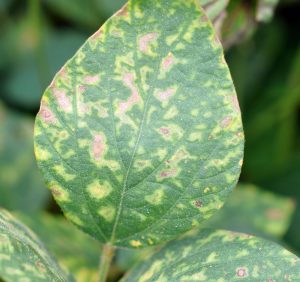Soybean cyst nematode (SCN) is the most consistent and significant yield-robbing pest/pathogen affecting soybeans in Illinois, and is estimated to be in over 85% of the fields in the state at some level. Despite this, it’s effects go unnoticed or undocumented as aboveground symptoms may not be evident. Historically, management of SCN included the use of an SCN resistant cultivar. For years, this strategy worked well in Illinois. However, with few exceptions, the source of resistance for SCN resistance originates from the PI88788 source. The result is similar to what you would expect in any situation where a pest or pathogen is exposed to a specific resistance source for an extended period of time- eventually the pest/pathogen can evolve to overcome this resistance.
In conversations with producers in 2018 and 2019, one point resonated- many fields are not tested for SCN, and most individuals do not know if their management strategies are effectively managing this nematode. Furthermore, no surveys of HG types have been conducted for many years. It is important to monitor our SCN populations to determine if current management practices are effective and identify locations where issues may be particularly problematic.
As part of the SCN Coalition, we surveyed fields in 2018 and 2019 for SCN and evaluated these for HG type test at the UIUC nematode diagnostic clinic. This clinic takes public and private soil samples and can evaluate them for a host of pathogenic and non pathogenic nematodes, and is an excellent resource for industry and producers in Illinois and the surrounding states. We are very fortunate to have a world class clinic like this available to us in our state. In our survey we asked participants to simply go into soybean fields in the Fall and collect soil. Soil was sent to the nematode service, and samples with SCN were evaluated for HG types.
An HG test tells us if the population of SCN can reproduce on certain soybean cultivars that include different sources of SCN resistance. The lines used include the following:
| indicator line 1 = Peking | indicator line 5 = PI209332 |
| indicator line 2 = PI88788 | indicator line 6 = PI89772 |
| indicator line 3 = PI90763 | indicator line 7 = Cloud |
| indicator line 4 = PI437654 |
When the population of SCN from a particular sample exhibits elevated reproduction on a source of resistance, the test shows this as a number. For example, a 1.2.5.7 would be able to reproduce on Peking, PI88788, PI209332, and Cloud.
Today I only will show the 2018 results, as the 2019 data are still being processed. Below are the counties and that were surveyed and their associated HG type tests.
| County Field ID | Hg Type |
| Clark 1 | 2.5.7 |
| Crawford 2 | 2.5.7 |
| Crawford 1 | 2.5.7 |
| Will 2 | 1.2.5.7 |
| Kane 1 | 2.5.7 |
| Kane 2 | 2.5.7 |
| Kendall 1 | 2.5.7 |
| LaSalle 1 | 2.5.7 |
| Kankakee 1 | 2.5.7 |
| Grundy 1 | 2.5.7 |
| Grundy 2 | 2.5.7 |
| Grundy 3 | 2.5.7 |
| AHIF | 2.5.7 |
| Shelby 1 | 2.5.7 |
| Ford 1 | 2.5.7 |
| Ford 2 | 2.5.7 |
| McLean 2 | 2.5.7 |
| Warren 2 | 1.2.5.7. |
| Piatt 1 | 2.5.7 |
| Piatt 2 | 2.5.7 |
| Montgomery 1 | 2.5.7 |
| Bureau 1 | 2.5.7 |
As you can see, All of the samples showed elevated reproduction on PI88788, regardless of location, and SCN populations from two samples could reproduce on Peking, the other source you may encounter in your beans. This doesn’t mean the resistance doesn’t work, in fact reproduction on PI88788 varieties will still be much less than a susceptible variety. However, it does show that our management is not working as well as it should. If SCN can reproduce on a resistant variety, this allows the populations to build over time and additional yield lost.
How can you manage SCN? First, sample your fields. This can be done at any time, but typically for convenience we say do it in the fall when you take your soil nutrient samples. In a season like this one, taking a sample in the spring once fields have dried out works as well. It is better to sample in the spring than not at all. Try and check your fields every 3-5 years as a way to monitor your population levels. Second, avoid continuous soybean production if possible. Research has shown that a single year away from soybean to a non host such as corn can reduce SCN egg counts by up to 50%. A single year out of soybean can be very effective in SCN management. Third, when you plant soybeans, if you cannot access a cultivar that fits your production system that contains a source of resistance other than PI88788, at a minimum rotate your varieties. Soybean cultivars differ in how much they reduce SCN reproduction even if populations can reproduce on PI88788. This has to do with how many copies of the resistance gene were included in a particular cultivar.
This study is being repeated in 2019 (into spring 2020) and if you would like to include samples from your fields, send me an email. Thank you again to the NCSRP and USB, as well as many industry sponsors for helping combat SCN through the SCN coalition. For more information on SCN management, click here.


